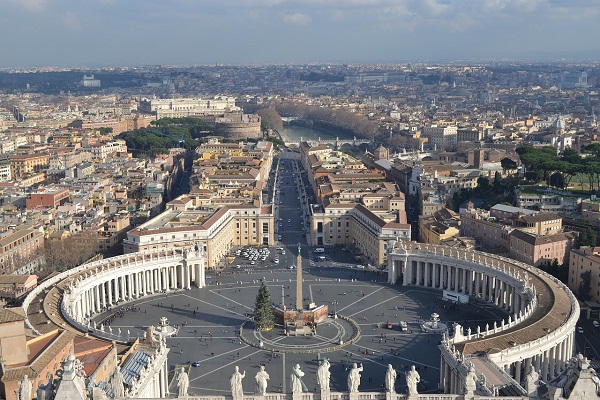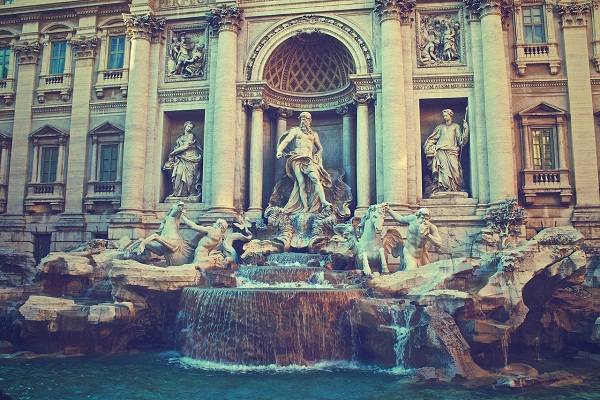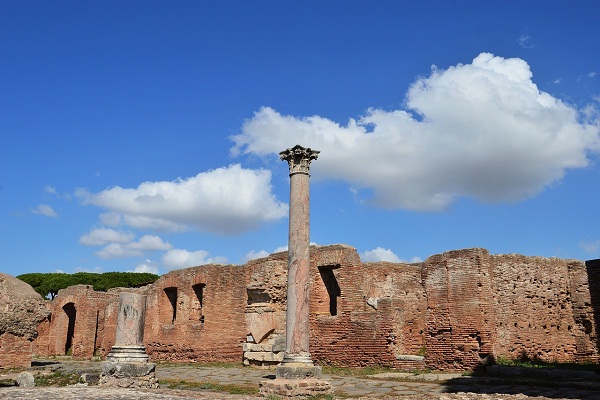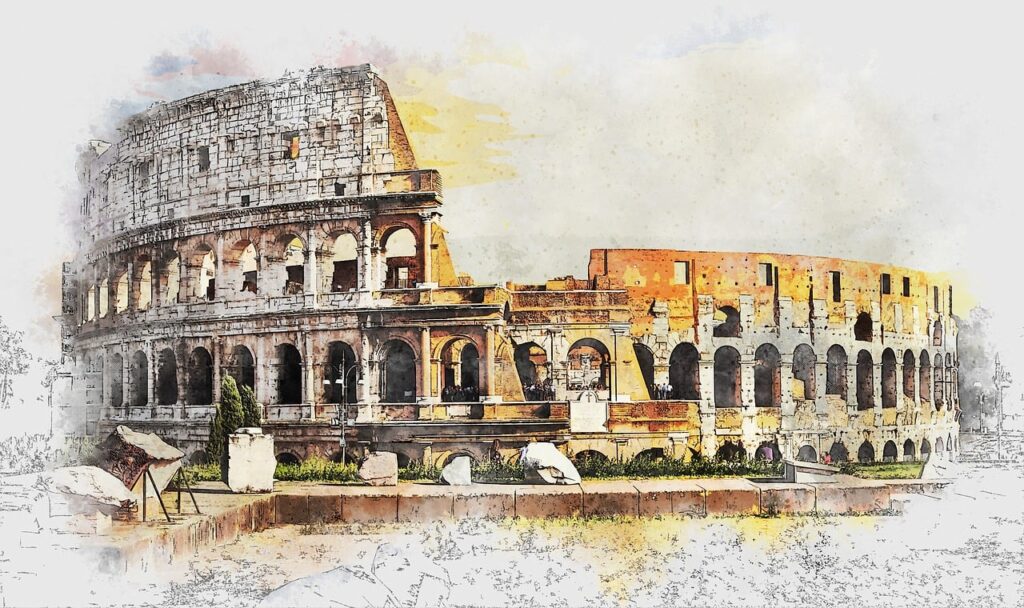BEST TIME TO VISIT ROME 2024
Post Highlights
- 1 Introduction of Rome
- 2 Rome Famous For
- 3 All the Places to Visit in Rome
- 4 All Nearby Places of Rome with Distance
- 5 Itinerary to Visit Rome and Nearby Places
- 6 How to Reach Rome
- 7 Best Hotels in Rome
- 8 Best Time to Visit Rome
- 9 Local Culture & Cuisine of Rome
- 10 Activities to Do in Rome
- 11 Rome Travel Budget for a Couple in Dollars and Local Currency
- 12 Rome Reviews of Travelers – Positive and Negative
- 13 Traveling with Family to Rome
- 14 For Solo Travelers
- 15 What to Carry With You
- 16 Important Instructions
- 17 Warnings
- 18 Conclusion
Introduction of Rome
When one thinks of timeless beauty, rich history, and unparalleled charm, Rome invariably comes to mind. Known as the “Eternal City,” Rome is a treasure trove of ancient wonders, exquisite art, and delectable cuisine. For foreigners seeking an immersive experience into the heart of Western civilization, Rome stands as a captivating destination that seamlessly blends the old with the new.
Rome Famous For
Rome, the capital city of Italy, is renowned for its iconic landmarks, including the Colosseum, Vatican City, the Pantheon, and the Roman Forum. Beyond its historical significance, Rome captivates visitors with its charming cobblestone streets, vibrant piazzas, and the enchanting Tiber River.
Visit: Oaxaca City
All the Places to Visit in Rome
1. Colosseum

The Colosseum, also known as the Flavian Amphitheatre, stands as an iconic symbol of ancient Rome’s grandeur. Completed in AD 80, this colossal amphitheater could accommodate over 50,000 spectators who gathered to witness gladiatorial contests, animal hunts, and other public spectacles. Its awe-inspiring architecture, characterized by arches and columns, reflects the engineering prowess of the Roman Empire. Despite the ravages of time, the Colosseum remains a testament to Rome’s rich history and cultural legacy, attracting millions of visitors each year.
Vatican City

Situated at the core of Rome, Vatican City stands as the tiniest sovereign state worldwide, encompassing the smallest territory and population. Home to the Pope and the headquarters of the Catholic Church, this city-state is a spiritual and cultural center. St. Peter’s Basilica, an architectural marvel, dominates the skyline, while the Vatican Museums house an extraordinary collection of art, including Michelangelo’s masterpiece, the Sistine Chapel. The juxtaposition of religious significance and artistic splendor makes Vatican City a unique and compelling destination for pilgrims and tourists alike.
Roman Forum

The Roman Forum, once the bustling political, religious, and social center of ancient Rome, now stands in ruins, offering a glimpse into the city’s glorious past. Surrounded by iconic structures like the Temple of Saturn and the Arch of Septimius Severus, the Forum was the venue for public speeches, elections, and various ceremonies. Strolling through its remnants, visitors can sense the echoes of Roman history and envision the lively marketplace and political debates that once animated this archaeological marvel.
Explore: Mexico City
Pantheon

The Pantheon, a marvel of ancient Roman engineering and architecture, stands as a testament to the ingenuity of its creators. Built by Emperor Hadrian in AD 126, this domed structure was dedicated to the gods and has endured as the best-preserved building from ancient Rome. The massive concrete dome, with its oculus at the center, allows sunlight to filter into the majestic interior. The Pantheon’s enduring grandeur and harmonious design continue to captivate visitors, serving as a tribute to Rome’s architectural brilliance.
Trevi Fountain

The Trevi Fountain, a masterpiece of Baroque art, is a captivating landmark that draws crowds with its grandeur and beauty. Completed in 1762, the fountain features a stunning facade adorned with statues depicting mythical sea creatures and gods. Legend has it that tossing a coin into the fountain ensures a return to Rome, a tradition embraced by countless visitors. As the largest Baroque fountain in the city, the Trevi Fountain remains not only a symbol of good fortune but also a testament to Rome’s artistic richness.
All Nearby Places of Rome with Distance
Ostia Antica, Distance 25 km

Ostia Antica, once the bustling port city of ancient Rome, now stands as an archaeological site that provides a glimpse into daily life during the Roman Empire. Located at the mouth of the Tiber River, this well-preserved site boasts ancient ruins of apartments, warehouses, and a well-preserved amphitheater. Walking through the ancient streets, visitors can envision the vibrant commercial activities and maritime trade that flourished in Ostia Antica, making it a fascinating destination for history enthusiasts.
Tivoli, Distance 30 km

Nestled in the picturesque hills east of Rome, Tivoli is renowned for its stunning landscapes and historical treasures. The town is home to the Villa d’Este, a UNESCO World Heritage site, famous for its terraced gardens adorned with fountains, sculptures, and water features. Another notable attraction is the Villa Adriana (Hadrian’s Villa), a vast archaeological complex that once served as the retreat for Emperor Hadrian. Tivoli’s harmonious blend of nature and ancient architecture offers a serene escape from the bustling energy of Rome.
Castel Gandolfo, Distance: 24 Km

Perched atop the Alban Hills, overlooking Lake Albano, Castel Gandolfo serves as the traditional summer residence of the Pope. The town exudes charm with its medieval architecture, cobbled streets, and the Papal Palace, which has been a retreat for pontiffs since the 17th century. Visitors can explore the Barberini Gardens and enjoy breathtaking views of the lake. Castel Gandolfo’s combination of historical significance and scenic beauty makes it a tranquil destination for those seeking a respite from the urban bustle of Rome.
Have a Look to: Cancun
Itinerary to Visit Rome and Nearby Places
Creating an itinerary for Rome and nearby places can be exciting, as the region is rich in history, culture, and stunning landscapes. Below is a proposed schedule for a week-long journey:
Day 1-3: Rome
Day 1: Explore Ancient Rome
- Morning: Start your day at the Colosseum. Buy your tickets ahead of time to avoid waiting in lines.
- Afternoon: Visit the Roman Forum and Palatine Hill, located nearby.
- Evening: Stroll around the historic center. Visit the Pantheon and Piazza Navona.
Day 2: Vatican City
- Morning: Visit St. Peter’s Basilica. Ascend to the summit of the dome to enjoy a sweeping panorama of the city.
- Afternoon: Explore the Vatican Museums and the Sistine Chapel. Book tickets in advance.
- Evening: Wander through the charming streets of Trastevere and enjoy dinner at a local trattoria.
Day 3: Art and Gardens
- Morning: Visit the Borghese Gallery. Reserve tickets ahead of time.
- Afternoon: Relax at Villa Borghese Gardens. Rent a rowboat on the lake or explore the walking paths.
- Evening: Take a leisurely stroll along the Tiber River and cross over the Ponte Sant’Angelo.
Day 4: Day Trip to Tivoli
- Take a day trip to Tivoli, approximately 30 km from Rome.
- Morning: Explore Villa d’Este, known for its beautiful gardens and fountains.
- Afternoon: Visit Hadrian’s Villa, a UNESCO World Heritage site showcasing Roman architecture.
Day 5: Day Trip to Pompeii and Naples
- Take a high-speed train to Naples (about 1 hour) and continue to Pompeii (30 minutes by train).
- Morning and Afternoon: Explore the ancient ruins of Pompeii.
- Evening: Return to Naples for dinner and explore the historic city center.
Day 6: Day Trip to Florence
- Take a high-speed train to Florence (about 1.5 hours).
- Morning and Afternoon: Visit the Uffizi Gallery, Ponte Vecchio, Florence Cathedral, and Piazza della Signoria.
- Evening: Enjoy dinner in the charming streets of Florence before returning to Rome.
Day 7: Relax and Explore
- Spend your last day relaxing and exploring more of Rome.
- Morning: Visit the Spanish Steps and Trevi Fountain.
- Afternoon: Shop on Via del Corso or explore the Galleria Borghese.
- Evening: Have a farewell dinner at a local restaurant.
Adjust the itinerary based on your interests and pace, and don’t forget to savor the local cuisine throughout your trip.
How to Reach Rome
Reaching Rome can be done by various means of transportation, and the method you choose will depend on your location and preferences. Here are some common ways to reach Rome:
- By Air:
- Leonardo da Vinci-Fiumicino Airport (FCO): This is Rome’s main international airport, located about 30 kilometers southwest of the city center. Many international flights arrive here.
- Ciampino Airport (CIA): Another airport in Rome, situated about 15 kilometers southeast of the city center. It is often used by low-cost carriers.
- By Train:
- Rome is well-connected by train services. The main train station is Roma Termini, located in the city center. Additionally, there are alternative railway stations such as Roma Tiburtina and Roma Ostiense.
- By Car:
- If you are traveling from nearby cities or countries, you can reach Rome by car. Italy has an extensive network of highways, and Rome is well-connected. However, be aware of traffic conditions and parking challenges in the city.
- By Bus:
- Long-distance buses connect Rome with various European cities. This option may be more time-consuming but can be cost-effective.
- By Cruise:
- If you are arriving from a nearby coastal area, Rome has a cruise port called Civitavecchia, which is about 80 kilometers northwest of the city. You can then take a train or shuttle into Rome.
- By Bike or Walking:
- Depending on your location and adventure spirit, you might consider cycling or walking to Rome. This option is obviously more feasible for those starting from relatively nearby regions.
Always consider factors such as cost, time, and convenience when choosing your mode of transportation. Rome is a major tourist destination, so it is well-connected and accessible through various means.
Best Hotels in Rome
Keep in mind that the status and rankings of hotels may have changed, so it’s advisable to check recent reviews and ratings for the most up-to-date information. Here are a few notable hotels in Rome:
- Hotel Eden: A luxury hotel located near the Spanish Steps, known for its elegant rooms and rooftop terrace offering panoramic views of Rome.
- Hassler Roma: Situated at the top of the Spanish Steps, this five-star hotel is renowned for its classic style, exceptional service, and stunning views of the city.
- Rome Cavalieri, A Waldorf Astoria Hotel: A lavish hotel set in a 15-acre private park with a grand art collection, luxurious rooms, and amenities. It offers a bit of a retreat from the bustling city.
- Grand Hotel Via Veneto: Located on the famous Via Veneto, this five-star hotel combines modern luxury with the glamour of Rome’s golden age. It’s known for its stylish rooms and rooftop terrace.
- Hotel de Russie: Situated between Piazza del Popolo and the Spanish Steps, this Rocco Forte property is known for its beautiful garden, upscale rooms, and central location.
- Palazzo Manfredi – Relais & Châteaux: A luxury boutique hotel with a prime location overlooking the Colosseum. It provides a personalized and unique encounter.
- Portrait Roma: This stylish hotel, part of the Ferragamo family’s Lungarno Collection, is located near the Spanish Steps. It is known for its contemporary design and personalized service.
- JK Place Roma: A boutique hotel near the Spanish Steps, JK Place Roma is recognized for its chic interior design, attentive service, and comfortable accommodations.
Best Time to Visit Rome
The best time to visit Rome depends on your preferences and the type of experience you’re seeking. However, generally speaking, the most favorable times are during the spring (April to June) and fall (September to October).
- Spring (April to June):
- Weather: Mild temperatures, blooming flowers, and longer daylight hours make spring a delightful time to visit Rome.
- Crowds: While it’s a popular time, it’s not as crowded as the peak summer months.
- Events: Various outdoor events and festivals take place during this season.
- Fall (September to October):
- Weather: Similar to spring, the weather is pleasant with cooler temperatures compared to the peak summer months.
- Crowds: Tourist numbers start to decrease after the summer rush.
- Cultural Events: Fall is a time when many cultural events and exhibits take place.
- Winter (November to February):
- Weather: Winters are mild in Rome, but it can get chilly, especially in January and February. Rain is more likely during this period.
- Crowds: Tourist numbers are lower during the winter, offering a quieter experience.
- Cultural Events: Some indoor events and cultural activities continue during the winter.
- Summer (July to August):
- Weather: Rome can get hot and crowded during the summer, with temperatures often exceeding 30°C (86°F) or more.
- Crowds: Peak tourist season, so expect larger crowds at popular attractions.
- Festivals: While there are summer festivals, the heat and crowds may impact your experience.
Please be aware that these represent overall patterns, and the actual weather conditions may differ. Also, personal preferences play a role – some people enjoy the energy and warmth of summer despite the crowds, while others prefer the milder temperatures and fewer tourists in the shoulder seasons.
Local Culture & Cuisine of Rome
The local culture of Rome is deeply rooted in its ancient history, with influences from the Roman Empire, the Renaissance, and the Catholic Church. Here are some aspects of the local culture and cuisine in Rome:
Local Culture:
- Historical Sites: Rome is home to numerous historical sites, including the Colosseum, Roman Forum, Pantheon, and the Vatican City. These sites reflect the city’s ancient and medieval history.
- Art and Architecture: The city is a treasure trove of art and architecture. Visitors can explore masterpieces by Michelangelo, Raphael, and Bernini in museums, churches, and public spaces.
- Religious Influence: The Vatican City, an independent city-state within Rome, is the center of the Catholic Church. St. Peter’s Basilica and the Sistine Chapel are iconic landmarks.
- Festivals and Celebrations: Rome celebrates various festivals and events throughout the year. Traditional events include the Rome Film Festival, Carnevale Romano, and the celebration of Rome’s birthday (Natale di Roma).
- Outdoor Lifestyle: Romans have a lively outdoor lifestyle. Piazzas (squares) like Piazza Navona and Campo de’ Fiori are popular gathering spots. The tradition of the evening passeggiata, a leisurely stroll, is still alive.
Local Cuisine:
- Roman Pasta Dishes:
- Carbonara: Pasta with a sauce made from eggs, Pecorino Romano cheese, guanciale (cured pork jowl), and black pepper.
- Cacio e Pepe: Pasta with Pecorino Romano cheese and black pepper.
- Roman Specialties:
- Supplì: Deep-fried rice balls filled with ragù (meat and tomato sauce) and mozzarella.
- Roman-style Artichokes: Artichokes prepared with garlic, mint, and parsley.
- Pizza Roman Style:
- Pizza al Taglio: Rectangular, thick-crust pizza sold by weight, often topped with a variety of ingredients.
- Roman Street Food:
- Trapizzino: A pocket of pizza dough filled with traditional Roman dishes like tripe or meatballs.
- Pizza Bianca: Simple, fluffy, and airy white pizza often enjoyed plain or with olive oil.
- Desserts:
- Tiramisu: Coffee-flavored dessert made with layers of coffee-soaked ladyfingers and mascarpone cheese.
- Cannoli: Pastry tubes filled with sweet ricotta cheese, often with chocolate chips or candied fruit.
- Wines:
- Rome is surrounded by wine-producing regions. Local wines, such as Frascati and Marino, complement Roman cuisine.
Exploring the local culture and cuisine in Rome is a delightful experience, offering a blend of history, art, and delicious traditional dishes.
Activities to Do in Rome
Rome is a city rich in history, art, and culture, offering a plethora of activities for visitors. Explore these recommendations for activities in Rome:
- Visit the Colosseum: Explore this iconic Roman amphitheater, known for its gladiator contests. Consider joining a guided tour to learn more about its history.
- Roman Forum: Wander through the ruins of the Roman Forum, once the center of ancient Roman public life.
- Pantheon: Marvel at the Pantheon, a well-preserved ancient temple with a remarkable dome. It’s free to enter.
- Trevi Fountain: Toss a coin into the Trevi Fountain to ensure your return to Rome. It’s also a stunning work of art.
- Vatican City: Explore St. The Vatican Museums, Sistine Chapel, and St. Peter’s Basilica. Don’t forget to climb to the top of St. Peter’s Dome for a panoramic view of the city.
- Spanish Steps: Climb the Spanish Steps, a popular meeting place, and enjoy the view from the top.
- Trastevere: Wander through the charming streets of Trastevere, known for its bohemian atmosphere, narrow cobblestone streets, and vibrant nightlife.
- Piazza Navona: Visit this lively square featuring three beautiful fountains, including the famous Fountain of the Four Rivers by Bernini.
- Borghese Gallery and Gardens: Explore the Borghese Gallery, home to an impressive collection of art, and take a stroll in the adjacent Villa Borghese Gardens.
- Capitoline Museums: Discover the Capitoline Museums, which house a vast collection of art and artifacts from ancient Rome.
- Appian Way: Walk or bike along the historic Appian Way, one of the oldest and most important Roman roads.
- Catacombs of Rome: Explore the catacombs, underground burial sites that provide insight into ancient Roman burial practices.
- Roman Cuisine: Indulge in delicious Roman cuisine, trying local specialties like pasta carbonara, cacio e pepe, and Roman-style pizza.
- Street Markets: Visit local markets like Campo de’ Fiori and Mercato Trionfale to experience the vibrant atmosphere and sample fresh produce and local products.
- Nightlife in Testaccio: Experience the nightlife in the Testaccio district, known for its bars, clubs, and authentic Roman atmosphere.
Remember to check for any travel restrictions or changes in operating hours before planning your visit to specific attractions.
Rome Travel Budget for a Couple in Dollars and Local Currency
I can provide you with a general idea of a travel budget for a couple in Rome, including both dollars and local currency (Euro).
- Accommodation:
- Budget: $80-150 per night
- Local Currency: €70-130 per night
- Meals:
- Budget: $30-70 per day (per person)
- Local Currency: €25-60 per day (per person)
- Transportation:
- Public Transport: $10-20 per day (per person)
- Local Currency: €9-18 per day (per person)
- Taxi (occasional use): $15-30 per ride
- Local Currency: €13-27 per ride
- Attractions and Entertainment:
- Entrance fees, tours, etc.: $20-50 per day (per person)
- Local Currency: €18-45 per day (per person)
- Miscellaneous:
- SIM card, toiletries, etc.: $10-20 per day (per person)
- Local Currency: €9-18 per day (per person)
- Total Daily Budget (per person):
- Budget: $150-330 per day
- Local Currency: €130-285 per day
- Overall Travel Budget for a Week (per couple):
- Budget: $1050-2310 for a week
- Local Currency: €910-1995 for a week
Remember, these are rough estimates, and the actual expenses can vary based on personal preferences, travel style, and seasonal fluctuations. Additionally, be sure to consider factors like travel insurance, souvenirs, and unexpected expenses in your budget planning. Always check for the latest exchange rates and prices before making any financial decisions related to your trip.
Rome Reviews of Travelers – Positive and Negative
Positive Reviews:
- Rich History and Architecture: Travelers often praise Rome for its incredible historical sites and architecture, including the Colosseum, Roman Forum, and Pantheon. The city’s ancient ruins and well-preserved landmarks are a major draw.
- Art and Culture: Rome is celebrated for its art collections, museums, and cultural heritage. The Vatican Museums, home to masterpieces such as the Sistine Chapel, are particularly admired.
- Delicious Cuisine: Italian cuisine is loved worldwide, and Rome is no exception. Travelers appreciate the authentic pasta, pizza, gelato, and other local dishes. Dining in traditional Roman trattorias is often a highlight.
- Vibrant Atmosphere: The lively atmosphere in Rome’s streets and piazzas, especially in areas like Trastevere, is often mentioned positively. The bustling markets, street performances, and outdoor cafes contribute to the city’s vibrant ambiance.
- Warm Hospitality: Many visitors comment on the friendly and welcoming nature of the locals. Tourists often feel a sense of hospitality and warmth during their stay.
Negative Reviews:
- Crowds and Lines: Rome is a popular tourist destination, and certain attractions can get extremely crowded, leading to long lines. The Colosseum and Vatican City, in particular, are known for attracting large crowds.
- Traffic and Transportation: Some travelers find Rome’s traffic and public transportation system challenging. Traffic congestion and a complex public transportation network can make getting around the city more difficult for some visitors.
- Pickpocketing and Scams: Like in many tourist-heavy cities, Rome has reports of pickpocketing and scams. Travelers are often warned to be cautious in crowded areas and to safeguard their belongings.
- Maintenance Issues: Despite its historical charm, some areas in Rome may show signs of wear and tear. Maintenance issues, graffiti, and occasional litter in certain areas have been noted by some visitors.
- High Prices: Rome can be relatively expensive compared to other European cities. Dining, accommodation, and certain attractions may be pricier, leading some travelers to feel that their budget doesn’t stretch as far as in other destinations.
Traveling with Family to Rome
Rome is a family-friendly destination, with interactive museums, gelato shops, and parks. Ensure to plan activities suitable for all ages and consider hiring a local guide for a more engaging experience.
For Solo Travelers
Solo travelers can immerse themselves in Rome’s history and culture freely. Join guided tours, stay in centrally located accommodations, and explore the city at your own pace.
What to Carry With You
- Comfortable walking shoes
- Light, breathable clothing
- Travel adapter
- Camera for capturing memories
- Guidebook or map
Important Instructions
- Respect dress codes in religious sites.
- Be cautious of pickpockets, especially in crowded areas.
- Use official taxis or reputable transportation services.
- Ensure you maintain proper hydration, particularly in the warmer seasons.
Warnings
- Beware of scams around tourist attractions.
- Follow COVID-19 guidelines and stay updated on travel advisories.
- Avoid using unlicensed transportation services.
Conclusion
Rome, with its timeless allure, promises an unforgettable experience for foreign visitors. From the grandeur of ancient monuments to the warmth of its people, the Eternal City beckons travelers to embark on a journey through history, culture, and culinary delights. Whether exploring iconic landmarks, savoring local flavors, or meandering through charming neighborhoods, Rome is a destination that leaves an indelible mark on the hearts of those fortunate enough to wander its storied streets.



